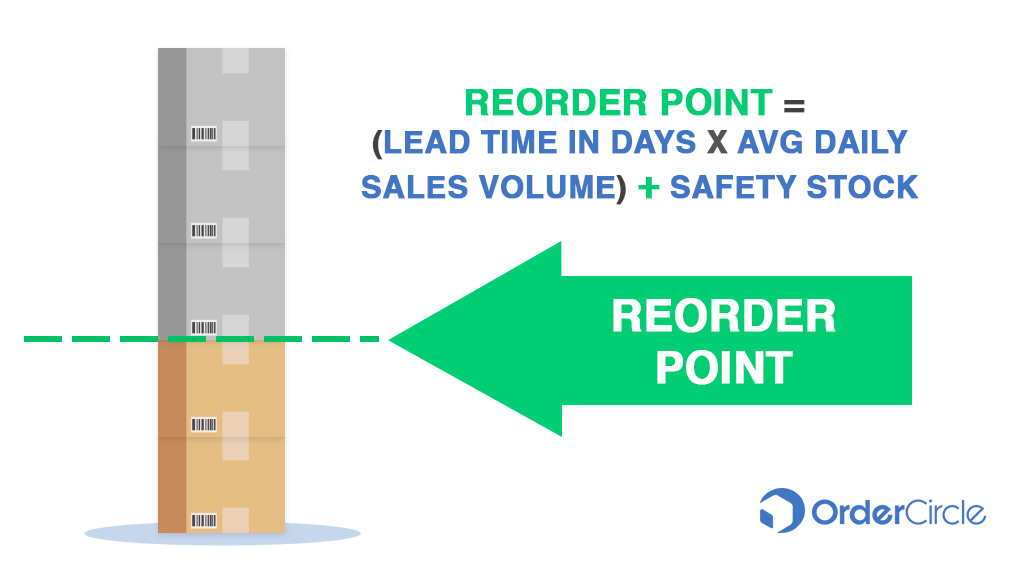Reorder Point
Hasan Nasir

Every business aims to grow its sales. For this, management of the inventory levels is crucial. One aspect of inventory management is maintaining an adequate stock level. It is essential to timely meet customer demand.
To maintain the desired inventory level, one needs to timely reorder the sold goods. But what is the correct time to do so? The reorder point concept helps answer this question.
Let us briefly understand what a reorder point is and what its importance is.
What is a reorder point, and why is it useful?
A reorder point is an inventory level at which a seller re-stocks the inventory. When the stock reduces to a particular level, the seller needs to order more goods. This is required to avoid stockouts and maintain uninterrupted sales. A reorder point helps the seller in indicating this level. It indicates to the seller when to replenish the sold stock.
We can think of it just like a fuel meter in a car. This meter indicates a level at which one needs to refuel the vehicle. This is done so that the vehicle does not stop due to a shortage of fuel. Similarly, reorder point is calculated so that a business runs smoothly.
At the reorder point, a seller replenishes his stock. By doing so, he avoids losing potential sales. A reorder point also helps in balancing the inventory levels in a business. It helps in avoiding over-stocking and under-stocking of inventory. If a seller holds high inventory, the holding costs increase, and it blocks more funds—however, understocking results in loss of sales. Thus, when a seller re-stocks as per the reorder point, they can balance the inventory level in his business.
We may note that the reorder point indicates only the right time to re-stock the inventory. It does not indicate the required reorder quantity, which a seller often decides based on the demand forecast. It also depends on the company’s inventory management policy.
Concepts such as Economic Order Quantity help decide the reorder quantity.
How to calculate a reorder point?
Every item in the inventory has a different sales cycle. Thus, a seller must calculate the reorder point separately for each item. To calculate the reorder point (ROP), let us first understand the following parameters:
Lead time: It is time a vendor takes to supply the goods ordered by the seller.
Safety stock: It is the buffer stock a seller keeps for emergencies. This is done to meet any sudden increase in demand. This also helps in case a vendor delays the delivery of goods to the seller.
Average daily sales: This is the average number of items a seller sells daily.
The formula:
Not all businesses keep a safety stock. Thus, a reorder point can be calculated both with and without safety stock.
Let us first understand the calculation of the ROP without a safety stock.
ROP = Average Daily Sales X Lead Time
For example, John is a shoe retailer. He sells an average of 100 pairs of shoes every day. When he places an order for more shoes, his vendor takes five days to deliver.
Let us calculate the reorder point in this business:
Lead time = 5 days
Average daily sales = 100 pairs of shoes
Thus, ROP = (100 x 5) = 500 pairs of shoes
Thus, John should reorder when there are 500 pairs of shoes left in the inventory.
Now say, for example, he also maintains a buffer. He keeps a safety stock for five days of sales.
In this case, the formula for calculating ROP will be as follows:
ROP = (Average Daily Sales X Lead Time) + Safety stock
Here, safety stock = (Average Daily Sales X Buffer Days)
Thus, ROP = (100 X 5) + 500 pairs of shoes
= 1000 pairs of shoes
Thus, including the buffer, Mr. X should reorder when 1000 pairs of shoes are left in the inventory.
Conclusion
A reorder point indicates when one should replenish the stocks. It is that level of inventory that a seller wishes to maintain in the business. Thus, when the inventory reaches the reorder point, he orders more.
To calculate the reorder point, one must track the lead time and average daily sales. Further, one must also account for the need for any buffer stock.
The reorder point helps maintain the business continuity. It also helps in avoiding unnecessary costs. It, however, does not provide the quantity one needs to order. This can be determined by demand forecast, using various methods.
